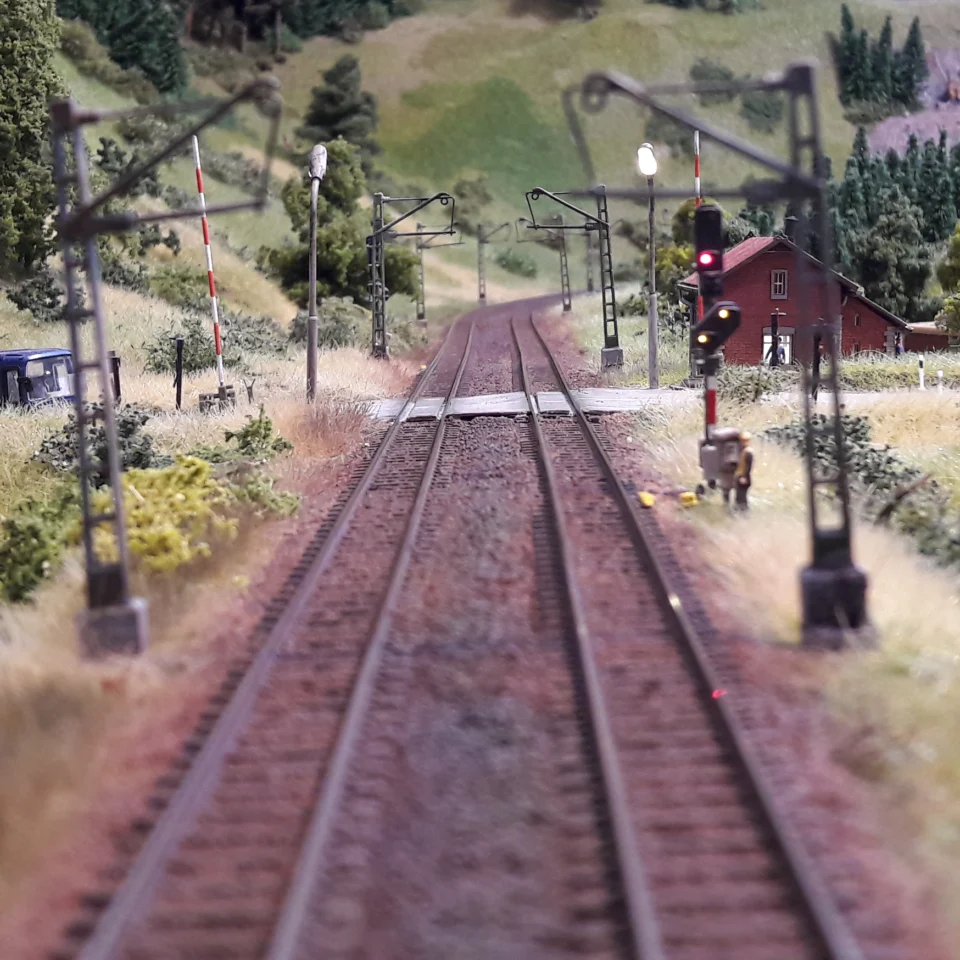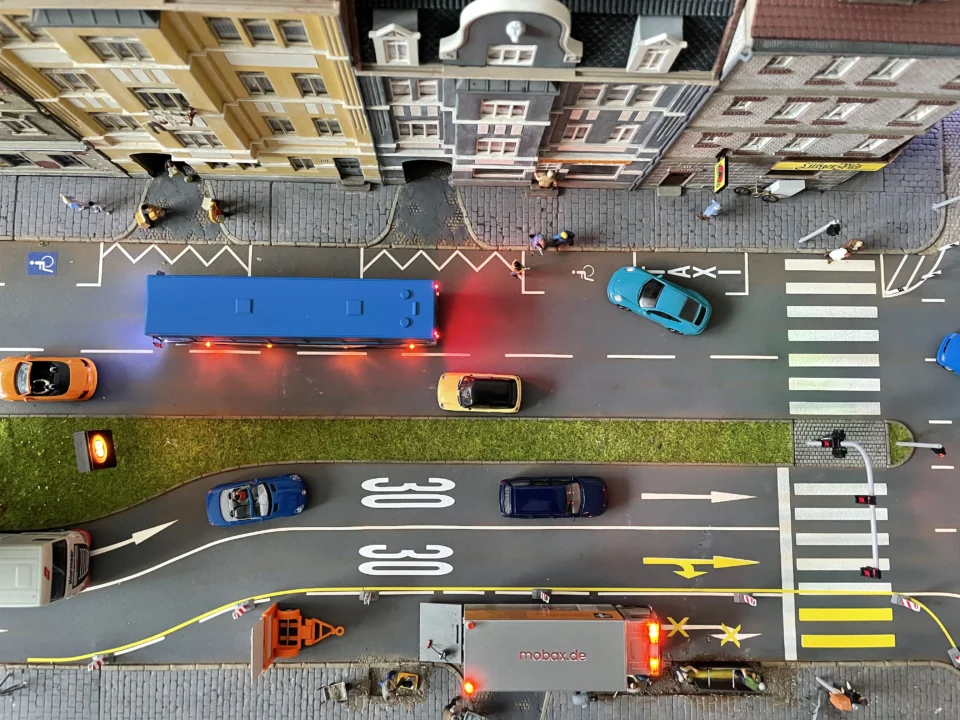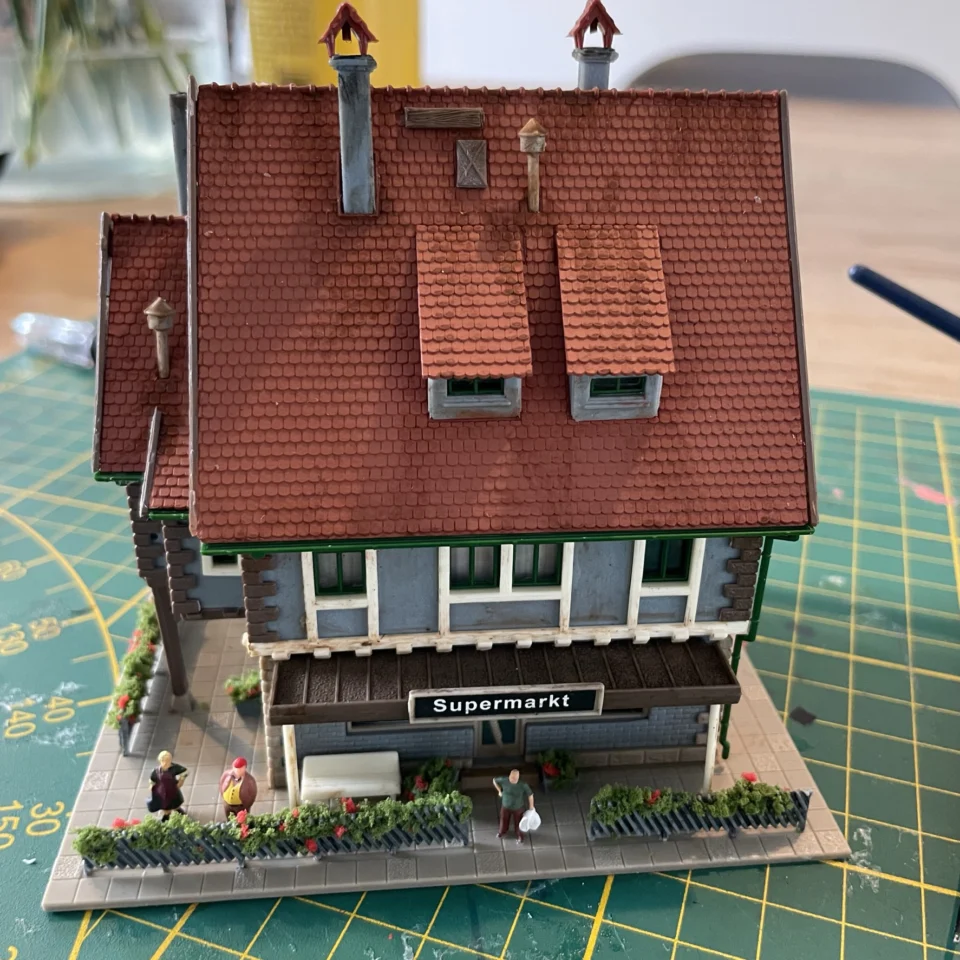Many scale N enthusiasts shorten their trains by necessity. An intercity with up to four cars is soon a reality. Not with 49-year-old Jürgen from Duisburg, on his layout an intercity has easily 15 cars and freight trains have more than 30. And that in scale N.
The size of the track is made for it. An L-shaped course with almost 7 meters in length and a depth that varies between 80 and 120 centimeters. The N track is composed of three levels. A shadow station with 7 tracks and above that two levels to drive on. Through spirals, these are connected to each other. The second level houses a second seven-track shadow station. The route the trains take is shaped like a dog bone.
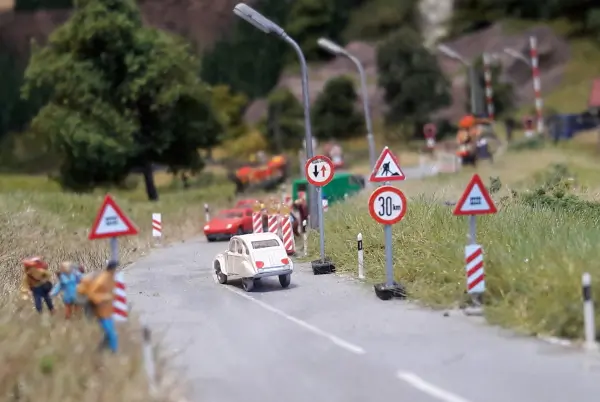
The job was built in four years, from idea to realization. The layout is based on the Black Forest railroad. “I’ve always liked long trains,” says Jürgen, “which is why I can’t do much with a siding.” Therefore, on the layout you can see IC79 with BR103 and 10 IC wagons, a long coal train with double traction in the form of a BR151. Although the layout is not limited to era IV, focusing on the 1980s, this is the main focus.
The scenery also thinks big; for example, there are nearly 3,000 pine trees on the course. Not the effect of a group of trees, but a solid forest. This gives the layout a serious look that justifies the long trains.
I like long trains; I can’t do anything with a local railroad.
Everything is operated with the Doehler & Haass FCC and controlled via the – reliable – SX bus. Operation is controlled via Traincontroller Silber, a relatively reliable but not error-free program. “Nobody is perfect,” Jurgen laughs, ” I hate it when the software changes wrong routes and derails things. Such things used to happen often, but not anymore now that I know the capabilities of the software and how to deal with it.”
What’s so great about this hobby? “There are so many skills needed, I learned many things like painting, working with wood,” says Jurgen, “and of course, as a trained electronics engineer, I have no problems with anything electrical.”
Because a lot of equipment is already in place; not much is bought anymore. If necessary then mostly online, as this is often the cheapest. Fairs, according to Jurgen, are ideal for buying older models that have not been on the market for some time.
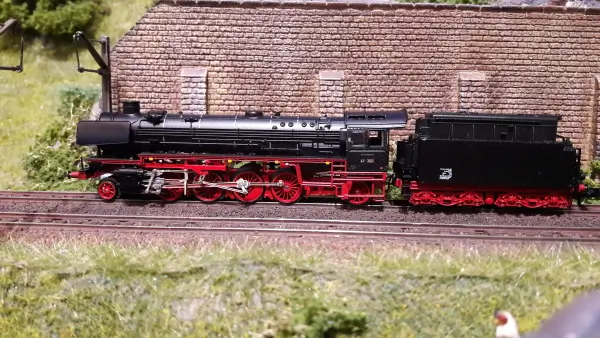
When purchasing new rolling stock, Jürgen prefers to look at older Minitrix models and old Fleischmann locomotives. These models are easy to maintain, repair and drive very reliably. Good handling is at the top of the list. Sound, on the other hand, not at all. “The horn or whistle are still acceptable, but the sounds lack the deep bass tones associated with a real locomotive.”
Unfortunately, there are sometimes disappointing purchases, such as the new Minitrix models of the BR218 and B185 series. “I was positively surprised by 2 Arnold locomotives: BR103 and BR127 Eurosprinter. Both locomotives have 2 flywheels and are very successful both optically and technically,” says
For the novice model railroader, he recommends that forums be ignored. “Even on the Internet you are bombarded to death with information; a good model railroad friend or roommate magazine will help you best on your way,” is his conclusion.
Those who want to enjoy scale N model trains of realistic lengths visit the profile of “Der Moba Erschaffer” on Instagram.
This article is also available in:
![]() Nederlands
Nederlands
